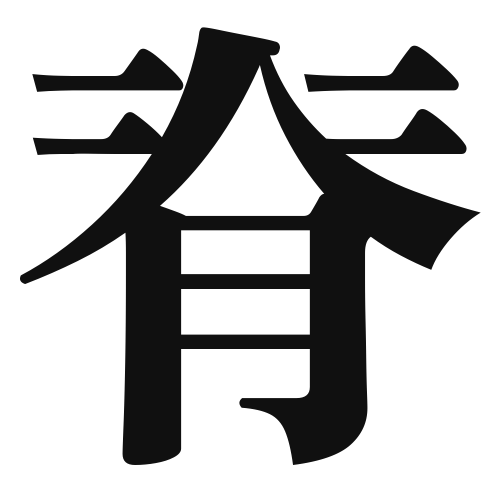1. Overview of Meaning
The kanji “脊” (seki) primarily means “spine” or “back.” It refers to the backbone of a living organism, which is a crucial part of the skeletal system that supports the body and protects the spinal cord.
2. Formation and Radical
Formation of the Kanji: The kanji “脊” is a phonetic-ideographic character (形声文字). It combines the radical for “flesh” (肉) on the left, indicating a relation to the body, and the phonetic component “セキ” (seki) on the right, which provides the pronunciation.
Radical: The radical for “脊” is 肉 (niku), which relates to the body or flesh.
3. Examples of Usage
Common Words and Phrases:
- 脊髄 (せきずい, sekizui) – spinal cord
- 脊椎 (せきつい, sekitsui) – vertebra
Example Sentences in Daily Conversation:
- 彼は脊椎を怪我したので、しばらく動けません。 (かれはせきついをけがしたので、しばらくうごけません。) – He injured his spine, so he can’t move for a while.
4. Synonyms and Antonyms
Similar Kanji:
- 背 (せ, se) – back; refers more generally to the back of a person or object.
Antonyms:
- 腹 (はら, hara) – belly; refers to the front part of the body, opposite to the back.
5. Cultural and Historical Background
Relation to Japanese Culture: The concept of the spine is significant in traditional Japanese medicine, where the health of the spine is believed to affect overall well-being.
Proverbs and Idioms:
- 背水の陣 (はいすいのじん, haisui no jin) – “a position of no retreat”; refers to a situation where one must fight with no option to back down, emphasizing determination.
